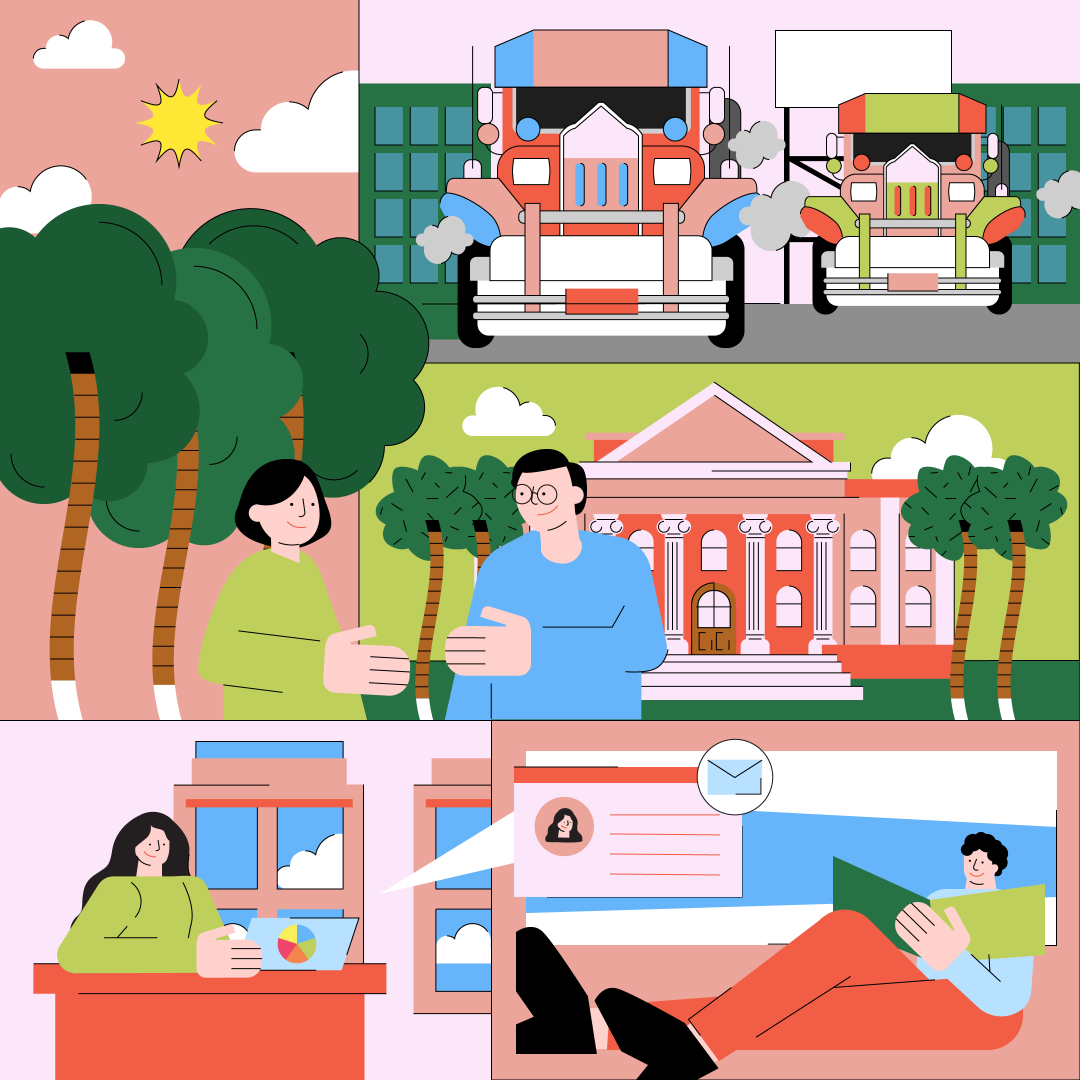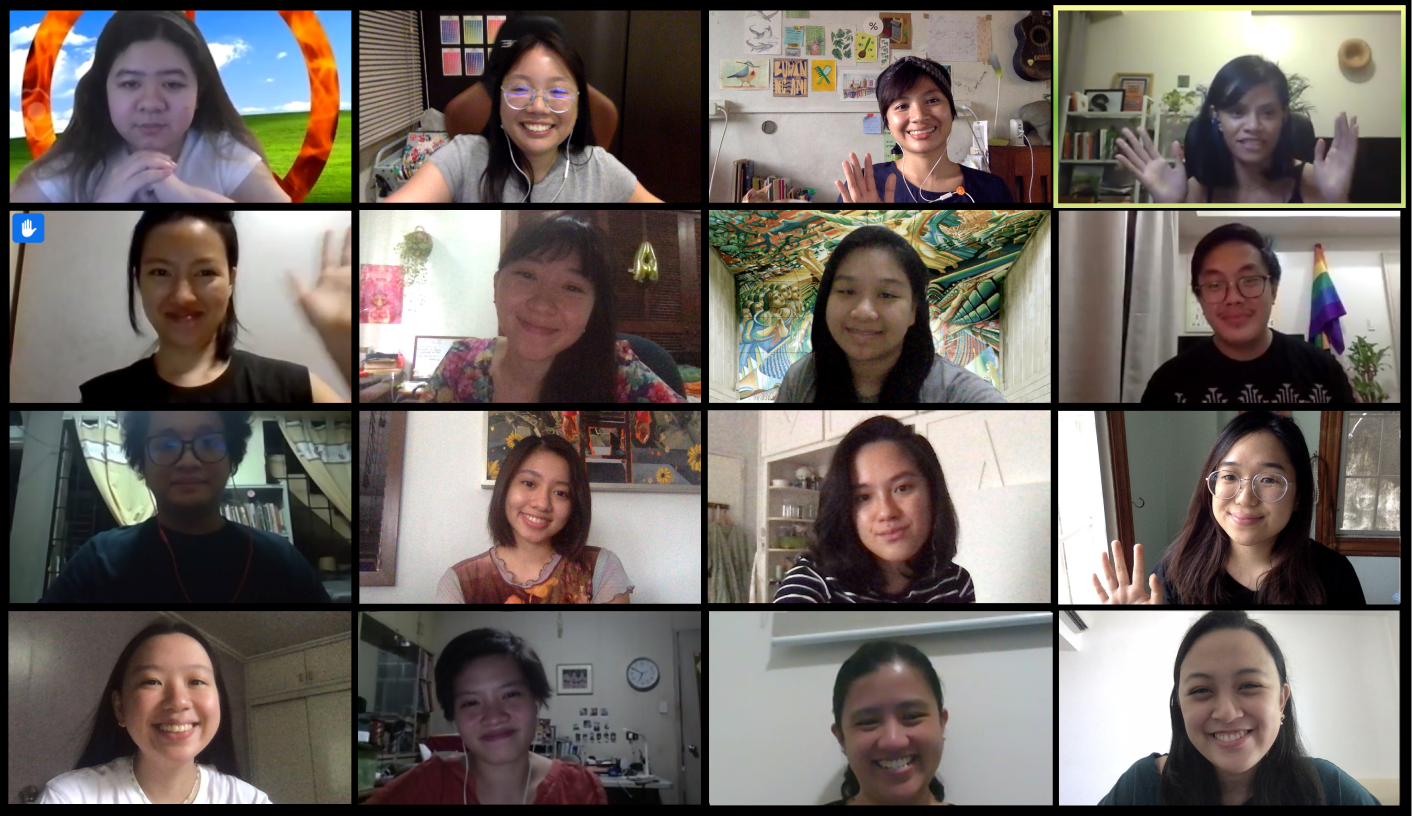
All meaningful design must come with co-creation. Read our learnings from a panel with advocates across transport, education, environment, and beyond.
Last September 4th, 2020, Works of Heart gathered prior partners from various sectors of social development for an afternoon of catching up, introductions to the 2020 interns, and a look into their respective fields of expertise—all in one cozy and socially-distanced Zoom meeting room!
Among these invited panelists, of whom we shared genuine and exciting conversations with were Raffy Magno from the Office of the Vice President, Pao Tiausas of TLDTD, Nikki Santos-Ocampo of AltMobility PH, Roxanne Fuentes from the public education division from CDO Misamis Oriental, Risa Barcelona of MAD Travel, and Clarisse Ligunas from the Philippine Department of Education.
Some topics of discussion included information on their sectors and challenges, case studies of their projects, as well as how they have been adjusting to the pandemic's "new normal". Each speaker had their own unique take on the questions, but one aspect of social entrepreneurship seemed to resonate across all sectors: A radical need to collaborate.

Illustrations by Macy, Andie and Abie
"Why is it that Filipinos have so many advocacies?"
"It's because the Philippines has so many problems. We need several advocacies to answer them," Nikki from AltMobility truthfully answered. In a panel stretching across agricultural change, transforming transport systems, and empowering the literary arts—this was no surprise. Every sector in our landscape is paved with unexplored issues.
"It's because the Philippines has so many problems. We need several advocacies to answer them."
— Nikki Santos-Ocampo, AltMobilityPH
Having them in the same room reminded us just how crucial the concept of "spaces" were for the existence of these advocacies. As Pao Tiausas mentioned, the number of available avenues for creators to get their work out there is simply not enough for the number of creatives in existence. It takes initiative to break expectations in order to create platforms for collaboration. Instead of competing to take up the most space, we can co-exist with others in the problem spaces we're compelled by.
But what role does design play in all of it?
We gravitate towards people with the same mindsets and ideals. Creatives are no exception. Design circles have the tendency to exist in their own bubbles, focusing more on craft and perfection rather than process and problems. Our habits as creators to sway towards self-indulgence are wholly human, but are dangerous when remained unchecked.
As Raffy Magno put it clearly: "Dapat may kausap kang tunay na tao. Ang kausap mo ay dapat hindi lang kayo-kayo, yung bubble ninyo. Yung challenge is to make that bubble bigger and more inclusive."
Remaining in these bubbles constrains our capacity to empathize. Design may have begun as an individualistic field, but when we question problems that are no longer our own, we face problems beyond what any one person can offer. Empathy becomes central. What is design if not for others?
"Dapat may kausap kang tunay na tao. Ang kausap mo ay dapat hindi lang kayo-kayo, yung bubble ninyo. Yung challenge is to make that bubble bigger and more inclusive."
- Raffy Magno, Office of the Vice President
"Disenyo para sa iba" means removing your ego from the equation. Beyond easy gratification: the need to please a client, to appease your boss, or to bring prestige to your organization... design can interrogate our world's issues. Design moves people. You wield a field that continuously influences, gathers, and organizes people every single day. Design's influence is untouchably pervasive. To influence people properly, you must understand more diverse communities, and design deeply.

At the end of the day, we all want the same thing.
We're just working towards it differently.
No one individual has the key to a problem; design is not an end-all, be-all solution. Collaboration and co-creation allows us to delve into contexts unlike our own. Thousands of people are invested in the same issues that keep you up at night. Making conscious and intentional efforts to diversify our perspectives allows us to not only be better listeners, but also better problem-solvers. The value our partners and stakeholders give is immeasurable. If anything, when we come together—we become better designers.
We don't have to wait on each other, we just have to find each other.
--
Words from the Interns
Works of Heart's The Good Design Internship goes fully remote this year. The interns, from different parts of the world, are all coming together—for the radical need to collaborate.
Chia Amisola, 3rd year Computing and the Arts, Yale University: "We need to move away from the designer-savior complex where creatives feel like they can do a few weeks of research, be embedded in a problem with a snippet of numbers and metrics, and fix something. Design has the dangerous potential of being alienating and superficial. We need to recognize the need to give space for others who have long been immersed in problems, combat systemic inequalities that have never even been addressed by pure design, and turn pseudo-creativity into thoughtful, emancipatory acts."
Abie Bungay, 3rd year Bachelor of Fine Arts Major in Information Design, Minoring in Development Management at Ateneo De Manila University: "For most artists and designers, the initial and immediate instinct is to put something out to the world to showcase—whether it be a design intervention, a work of art, a piece of literary writing, etc. We rarely come to realize and reflect on the fact that design in itself has the ability to establish and/or modify spaces where our artists can be recognized and invited to collaborate. As much as we are able to put forward noteworthy work that occupy such avenues, we are also invited to build these spaces for collaboration in the first place—maybe this is even where we need to start."
Andie Gamboa, Bachelor of Arts Major in Interdisciplinary Studies at the University of St. La Salle "It isn't enough to immerse yourself into communities and different contexts. The bulk of the work happens after, in your ability to empathize and identify with the people you're designing for. It's easy to fall trap to individuation when it comes to creative work, but to recognize the importance of collectivity is an essential step into doing genuine work with purpose."
Macy Escay, 4th year Bachelor of Fine Arts Major in Information Design at Ateneo de Manila University: "Beyond deliverables and tangible collaterals, design is a continuous and collaborative service that you work on with others. It is a call to action to amplify the rise and movement of various social impact and advocacy-driven platforms for a better nation."
